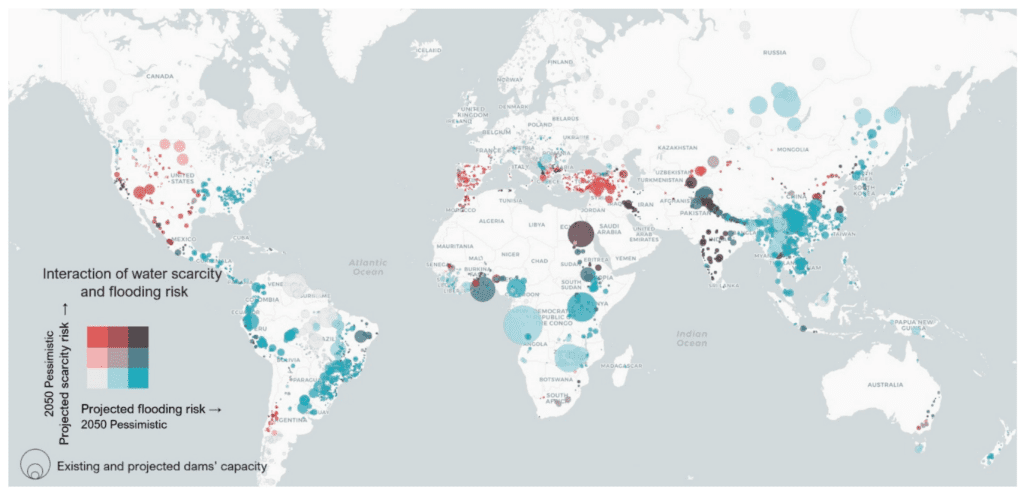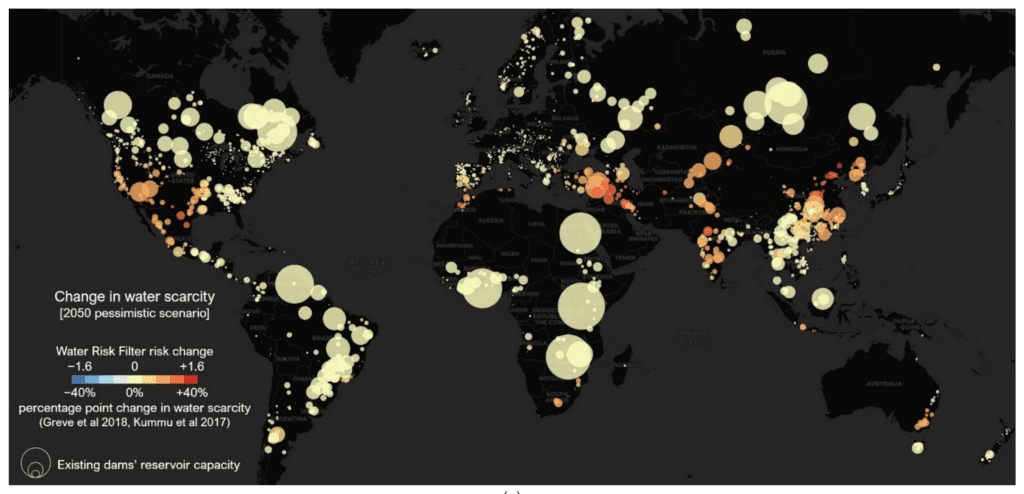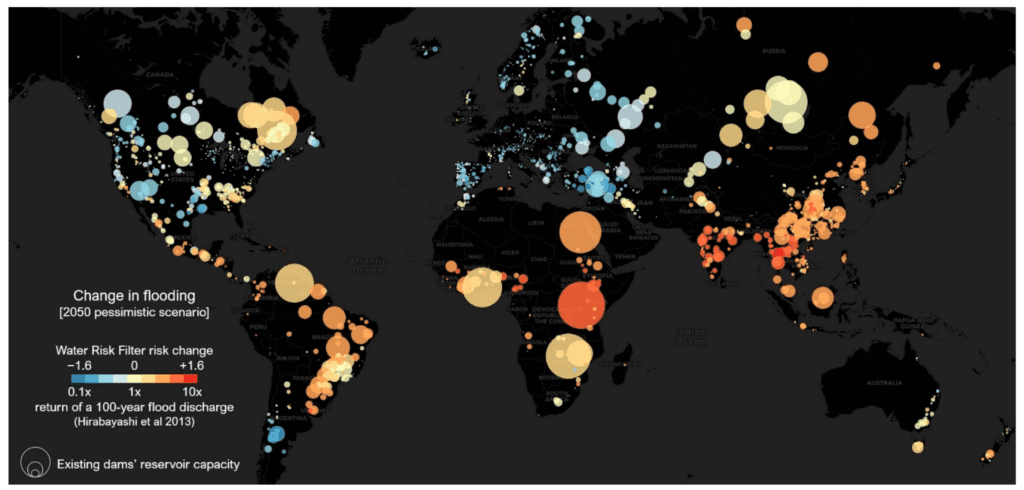THE BIG PICTURE: Hydropower’s Climate Risks
While hydropower provides about 16% of global electricity generation today, climate change is predicted to drive various changes in hydrology that could translate into a spectrum of risks for hydropower production.
A recent study published in the journal Water estimates 61% of all global hydropower dams will be in basins with very high or extreme risk for droughts, floods, or both by 2050 under a “pessimistic scenario”—which assumes a global mean surface temperature increase of 3.5 degrees Celsius by the end of the 21st century. The study assesses the risks of water scarcity and floods for existing and projected hydropower projects using World Wildlife Fund’s Water Risk Filter (WRF), a publicly available tool designed for companies and investors to assess water risks in their operations, supply chains, and investments.
This map shows all hydropower dams studied, including existing and projected ones. The colors indicate the combined projected risks of water scarcity and floods by 2050 under the pessimistic scenario. The size of the circles indicates the hydropower capacity of the dam. See the interactive versions of these maps at https://rcamargo.shinyapps.io/HydropowerCli-mateChange

A Key Concern: Water Scarcity
WRF data for 2020 suggests 658 (26%) of the world’s more than 2,500 existing hydropower dams are already in basins with medium to very high water scarcity risk. By 2050, under the pessimistic scenario, 806 dams (32%) will be in basins projected to have increases in scarcity risk, of which 178 dams (7%) will be in basins changing from medium to high risk. Another 168 dams (7%) will be in basins changing from high/very high to very high/extreme risk.
Regions facing the greatest increase in scarcity risks include China, Jordan (Al Wedha dam), Iraq, Morocco, Syria (Tabqa dam), and Victoria state in Australia. Countries with high hydropower capacities that also face increased risks include the U.S., India, Turkey, Mexico, Kazakhstan, Ukraine, and Spain. In the U.S., increased risks are concentrated within several states, including Montana, Nevada, Texas, Arizona, California, Arkansas, and Oklahoma.

Flooding Risks Could Decline But Remain Substantial
WRF data meanwhile suggests 1,877 (75%) of existing hydropower dams are already exposed to medium to very high flood risk. By 2050, this number is projected to decline. But under the pessimistic scenario, 963 dams (39%) will still be in basins with increased flood risk.
Regions slated to face the greatest increase in flood risk include Myanmar, Cameroon, Laos, Thailand, Uganda, Bangladesh, Colombia, China, Ethiopia, India, Kenya, and Vietnam. Among countries with high hydropower capacity are Canada (Quebéc), Uganda, Russia (Krasnoyarsk), Zambia (especially the Kariba dam), Egypt (High Aswan dam), Ghana (especially the Akosombo Main dam), Venezuela (Guri dam), and numerous dams in India, China (especially in the provinces Hubei, Yunnan, Guangxi, Sichuan, and Guizhou), Brazil (especially in the states of Goiás, Minas Gerais, and São Paulo), and Mexico.

—Sonal Patel is a POWER senior associate editor (@sonalcpatel, @POWERmagazine).